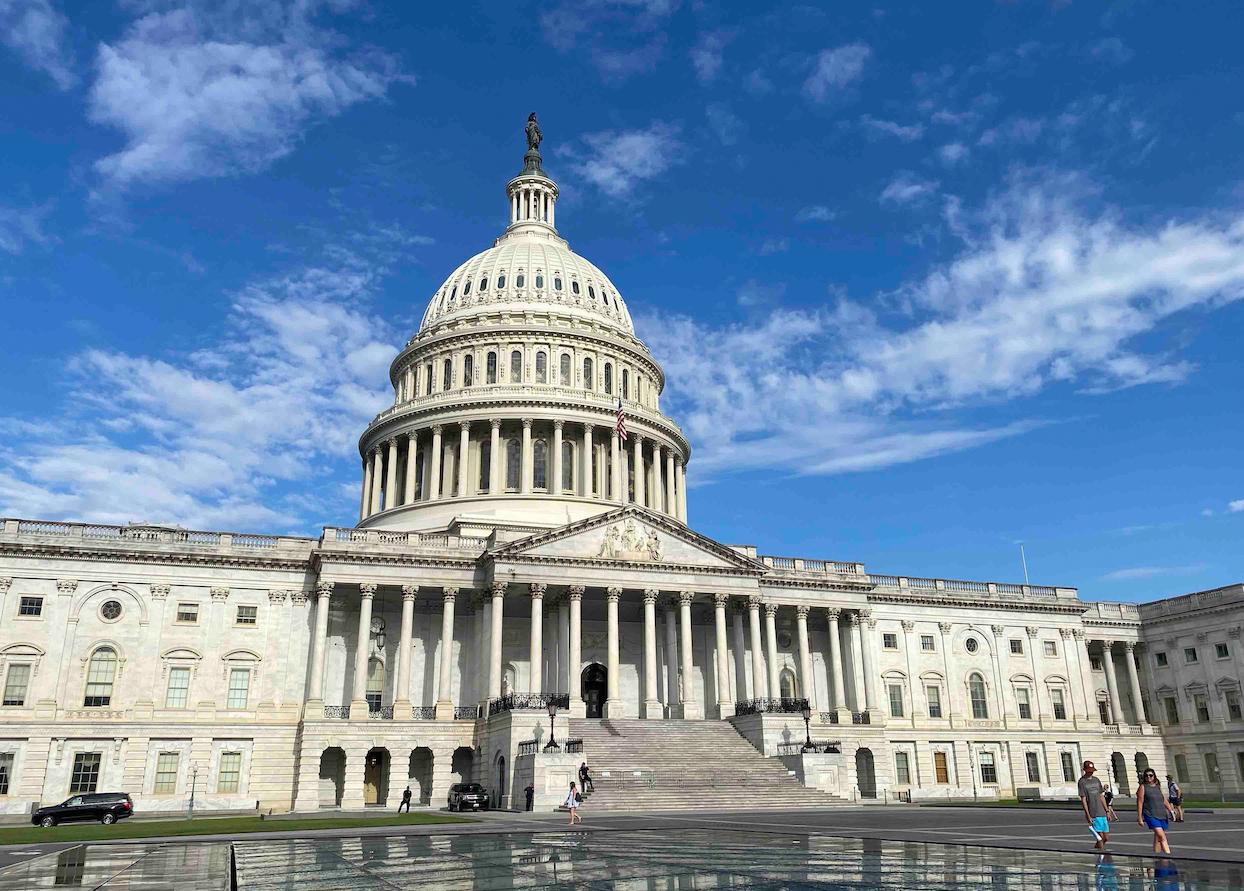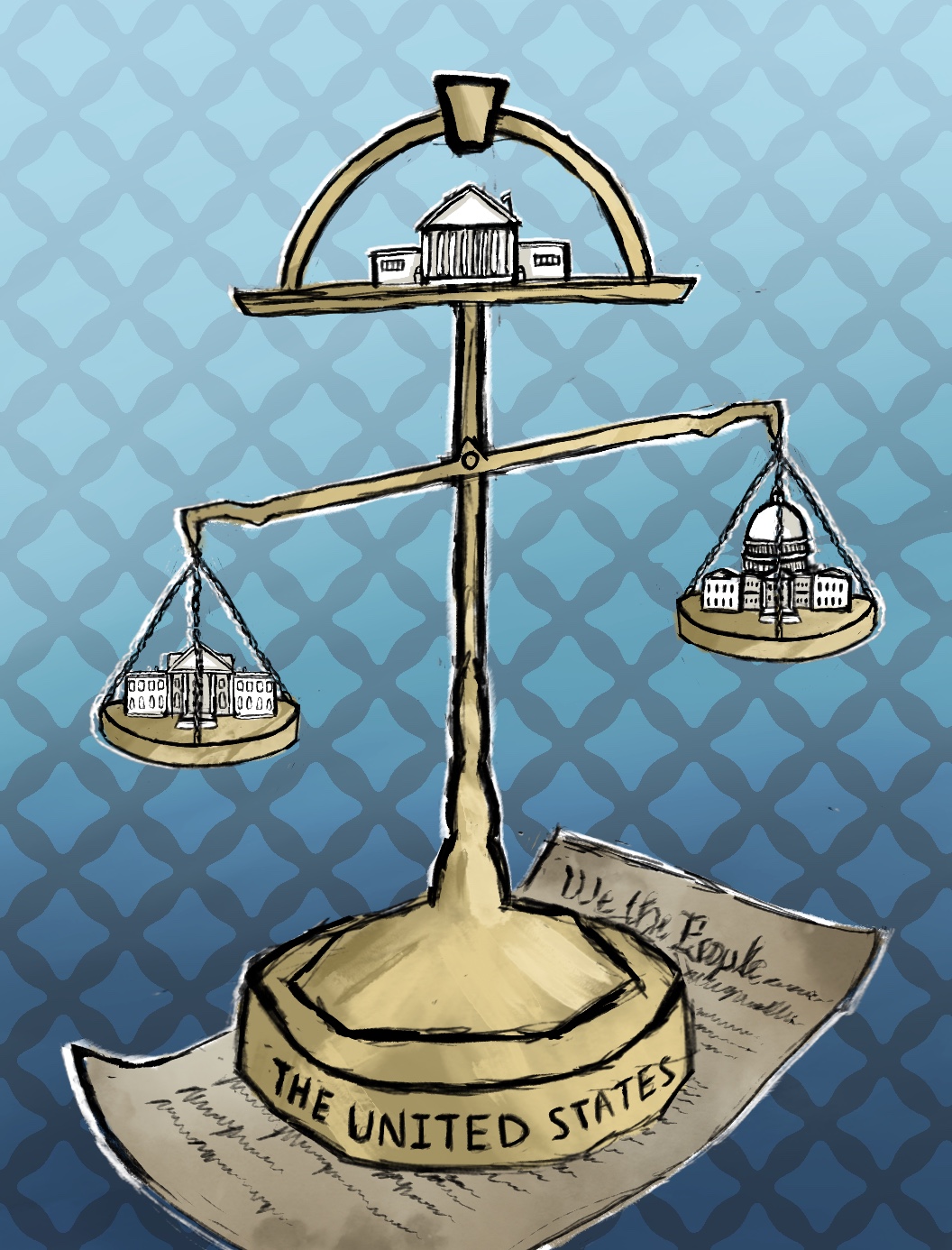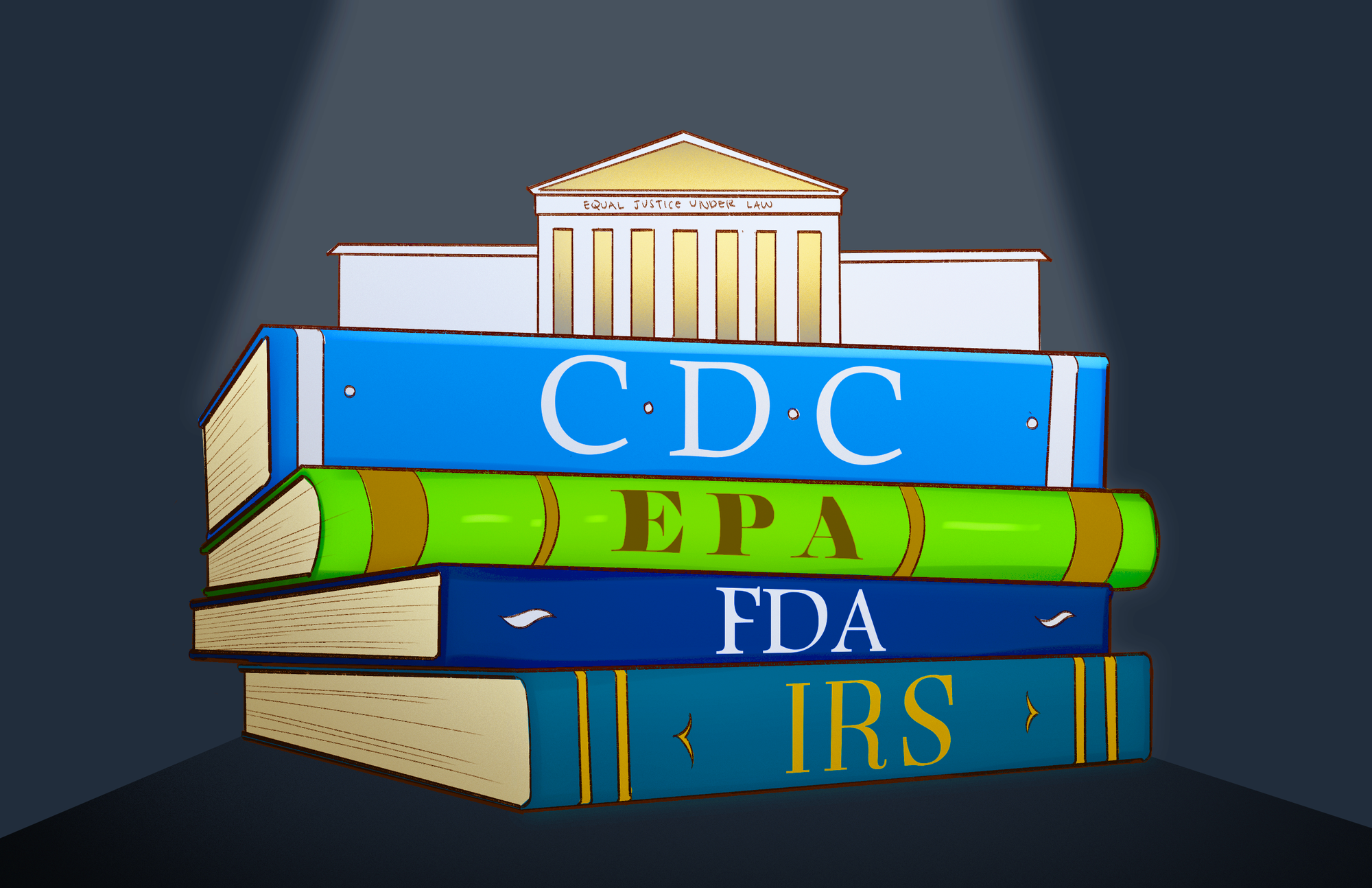Opinion: GOP-unified US government undermines constitutional checks and balances system

The United States Capitol in Washington, D.C. is pictured. Following the 2024 election, Republicans took the White House along with slim majorities in the House and Senate. (Myka Fromm/Daily Bruin senior staff)
By Karli Oppenheimer
May 8, 2025 7:29 p.m.
The White House has operated a unified government since President Donald Trump’s January inauguration.
With Republican majorities in the United States House of Representatives and the U.S. Senate and a conservative-leaning Supreme Court, a great deal of power over the future of the country lies in the hands of the GOP.
The first three articles of the Constitution distinguish three separate but equal branches of government in the U.S to collectively share authority. Checks and balances facilitate this separation of powers – limiting the power of each individual agency and granting each branch the authority to restrict the other two.
Checks and balances have become a point of contention among the American public as people await pushback from the branches overseeing the president.
With the federal government controlled by Republican majorities, presidential overreach has been treated with unorthodox leniency.
Beleh Toma, a fourth-year political science and history student and the chair of the Political Science Undergraduate Council, said a unified government carries simultaneous benefits and risks.
“The con of unified government is that you’re less likely to actually get bipartisan legislation,” Toma said. “On one hand, it can be effective in actually moving bills, but on the other hand, if you don’t need to get much input from the other side, you’re not compromising, and you might not be getting the full interest of the American people.”
This is not the first time in history the U.S. has seen a unified government. However, the unity among legislators and appointees is unique to this term.
The Supreme Court and Congress have both challenged some of Trump’s actions, while neglecting to address other examples of executive overreach.
This lax system of checks and balances is not merely a reflection of the unified government on Capitol Hill, but rather a product of the anomaly of Trump’s presidency and the relationships he has brought into the White House.
Eliana Bernstein, a third-year political science student and founder of the Bruin Undergraduate Policy Review, said she was concerned about the impacts of Trump’s appointments to the Supreme Court.
“I think we have to take into consideration that this is not just the judicial branch checking the presidential branch anymore,” Bernstein said. “This is like people trying to co-opt the president, and you co-opt the president by making decisions that will make him happy.”
Trump has already transgressed boundaries in policy areas outside the purview of the executive branch, such as through his attempts to eliminate birthright citizenship – the granting of citizenship to anyone born within the country’s borders, as established by the 14th Amendment of the Constitution.
One check frequently utilized by the Supreme Court is the process of judicial review, which allows federal judges and justices to rule on the constitutionality of the actions of the legislative or executive branches.
Thus far, every court that has considered the Trump’s executive order to nullify birthright citizenship it, an example of a successful check on the president’s unconstitutional actions.
More recently, the Supreme Court ruled against the president’s unlawful deportation of Kilmar Abrego Garcia, who is currently being detained in El Salvador.
Despite an order from the Supreme Court to release him from government custody, the White House has made no headway toward bringing Abrego Garcia home.
Does this mean that even when the president’s actions have been checked he need not alter his conduct? If so, what kind of example is this lax oversight setting for the future of the American government?
“He’s expanding the power and scope of the executive branch,” Toma said. “And I just want to warn many Republicans out there, people that may support Trump and his decisions, that this may set a precedent.”
This executive insubordination is a slippery slope and normalizes the opportunity for future presidents to continue to abuse and ignore checks and balances.
The president has also issued executive orders directed at funding cuts to various federal departments and agencies, including the Federal Emergency Management Agency, the U.S. Agency for International Development and the Department of Education.
These budget cuts have resulted in substantial layoffs, which in turn have made agencies unable to function effectively, limiting the resources they can provide to the American people.
Simultaneous to these drastic cuts to established agencies is Trump’s creation of the Department of Government Efficiency, which is dedicated to overseeing these severances, headed by tech billionaire Elon Musk.
While it is technically not outside the purview of the executive to institute new federal agencies, the Constitution clearly establishes congressional control over this power.
Trump has been unsuccessful in his attempts to abolish this bureaucracy entirely, as the elimination of agencies created by Congress goes beyond the power of the president.
In turn, these extreme funding and staff cuts to targeted agencies demonstrate an effort by the president to circumvent being checked for reaching beyond his authority, as these actions are not explicitly unconstitutional.
Congress holds the power of the purse, and the ultimate authority to allocate funding. Even so, legislators remain threatened by maintaining their status on the Hill.
“It’s just complacency and it’s fear,” Bernstein said. “And as much as there’s fear in the American public, there’s fear in our legislators.”
The lack of pushback against these funding cuts is largely attributed to the GOP majority in the House.
All of that being said, Congress has played a role in the attempt to undo Trump’s global tariffs, which were introduced earlier this year.
The authority to levy taxes lies with Congress. However, under certain circumstances, including matters of national security, the legislative branch may delegate these powers to the president.
Trump’s established tariffs on international goods have been widely opposed by many citizens, and Republican and Democratic legislators alike have expressed concerns about the implications these tariffs may pose.
On April 30, following Trump’s first 100 days in office, the Senate voted on a bipartisan bill to undo the tariffs that failed after a 49-49 tie.
Even with three Republicans in favor of the proposal, Democrats have been unsuccessful in stopping these tariffs. It seems the problem is not the unified government, but instead a particularly uncompromising GOP majority in powerful seats.
Zola Hoffmeister, a second-year history student, expressed hope that there will be more bipartisan Congress following the midterm elections.
“With midterms coming up, I think that’s where you’re going to see the people are going to be kind of mad about this, and so they’re going to use their own power to kind of enforce checks and balances through electing different officials in Congress,” Hoffmeister said.
A New York Times article describes this threat to the longstanding system of checks and balances as a comprehensive and systematic approach by the president to usurp and limit the powers of the other two branches.
With a more unified party behind him, Trump has already proven far more successful than expected at streamlining his agenda as the new president of the U.S.
The American public must accept this fact and begin to brainstorm ways to work alongside lawmakers, ensuring that the U.S. remains a strong democracy on all fronts.
Americans have the power to hold lawmakers accountable through working directly with legislators and threatening to vote them out of office.
Will officials begin to listen to the American public and push back on Trump’s authoritarian agenda, or will they observe and let the U.S. move towards a dictatorship?





